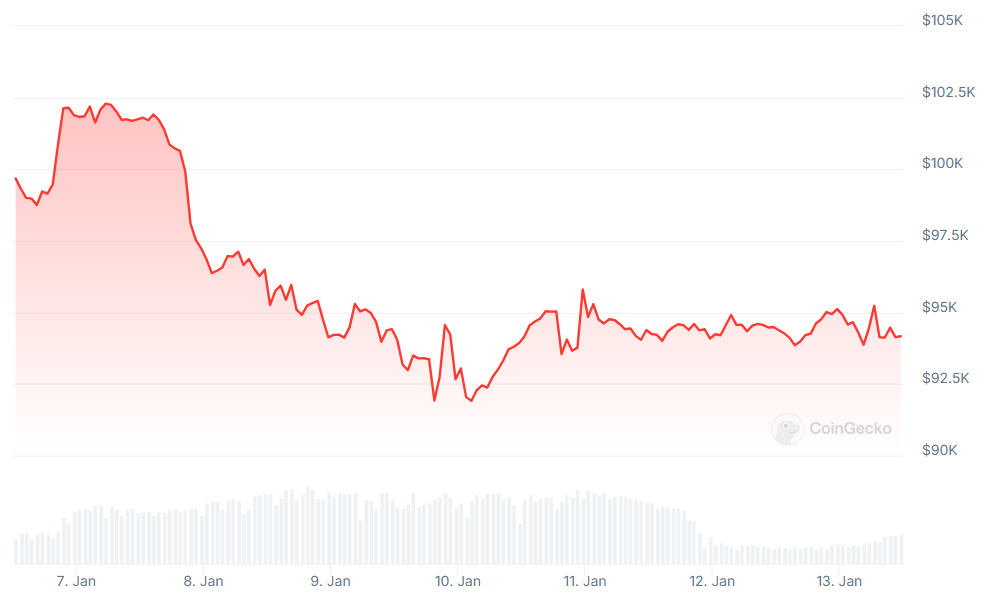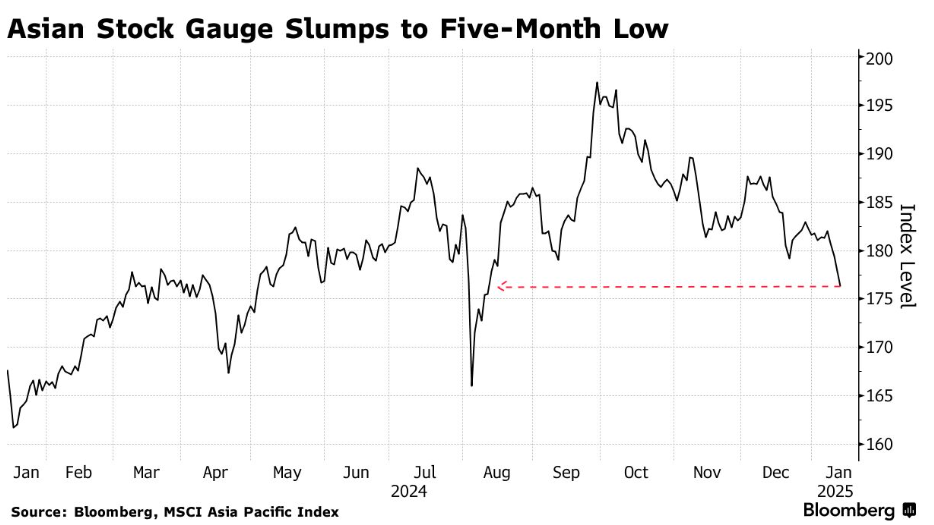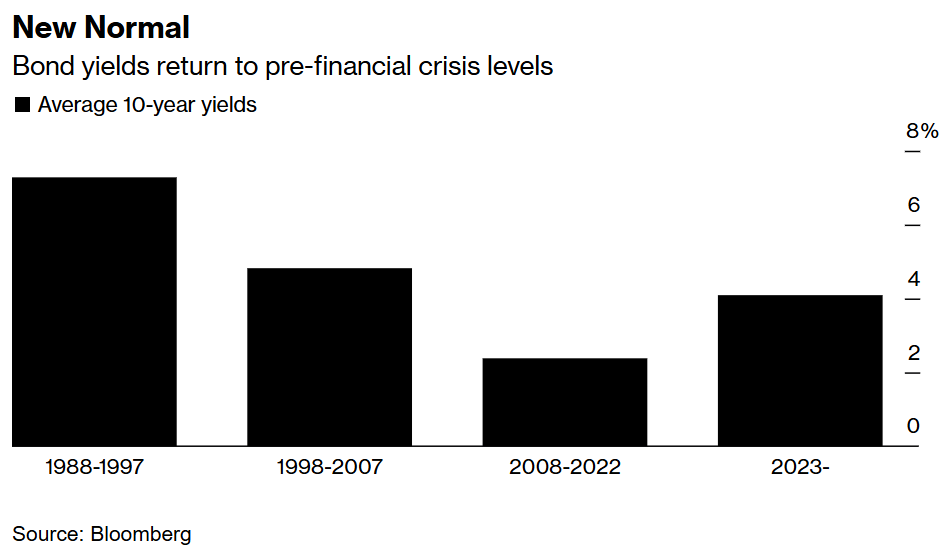Table of Contents
Bitcoin sank to its lowest level this year on Thursday as it struggled to retain momentum, following a good start to the new year that saw it recapture the $100,000 barrier.
On Thursday, Bitcoin dropped as much as 2.8% to $91,785, a significant decline from its recent high of $102,733 and over 15% below its all-time record of $108,315, which was achieved in mid-December.
Since then, the token has recovered and then lost momentum again after solid US jobs data, which is good news for the broader economy but bad news for risk assets.

Wednesday saw the second-biggest withdrawal of $583 million from US Bitcoin exchange-traded funds since they began a year ago.

Bitcoin reached new heights in 2024 because of the success of those ETFs and President-elect Donald Trump's vocal support for the digital assets industry.
But the climb has lost momentum since the beginning of the year.
Securities with a high degree of uncertainty were under pressure as US economic data released on Tuesday and Friday further dampened expectations for impending rate cuts by the Federal Reserve.
Bitcoin prices are set to hover between $91,000 and $102,000 due in part to the Fed's hawkish tone last month. The pause in rates is expected to last until the second half of 2025.
Stocks started the week on a rough note, with Asian benchmarks showing significant declines after robust US payroll data and a fresh wave of American sanctions on Russia threatened to crimp oil supplies, gutting the broader financial market.
The jolt from the sanctions is being experienced across the full range of risk assets, with the dollar gaining solid ground to a two-year high.
As investors dumped their bets on the Fed's interest rate cuts in response to robust US jobs data, the MSCI Asia equity index continued its four-day decline.
Further stock losses were predicted by equity futures in Europe and the US.
Hong Kong, Taiwan, and South Korean indices experienced declines, resulting in a 1.1% decrease in the MSCI Asia Pacific Index.

Chinese equities continued to decline despite local data indicating that exports reached a record high last year.
This could be one of the final peaks for the nation's trade, as Trump has pledged to implement even greater tariffs on Chinese products upon assuming office next week.
The hit to global stocks is a clear sign of investors' flight-to-safety bets, which are weighing on cryptos as well.
What's not helping is the global bond market tantrum throwing off digital asset investors.
The US Treasury market is increasing borrowing costs, which may have extensive implications.
The message from markets is becoming increasingly clear: Adapt to the ever-increasing rise in government bond yields in the US and across most of the world.
With the likelihood of a lengthy period of rising rates having ramifications for economies and assets everywhere, the world's biggest bond market is leading a reset higher in borrowing prices.
That clearly reflects the risk to the global easing narrative, even before Trump takes office and his policies kick off a period of inflationary pressures worldwide.
The Fed is now expected to stay on hold until the second half of this year, adding to investor concerns despite a crypto-friendly administration in the White House.
The assumed safety of US government debt is coming under increasing scrutiny, and as a result, yields on this asset are rising just days into the year 2025.
The US economy shows no signs of slowing down, as Friday's massive employment report showed.
Meanwhile, the Fed is reconsidering when to cut interest rates further, and Donald Trump is taking office with a policy agenda that puts growth ahead of debt and price concerns, given the soaring borrowing rates.
The rate on 10-year notes has increased by almost 1% in the past four months and is already approaching the 5% mark, which was briefly broken in 2023 and has not been seen since before the global financial crisis almost twenty years ago.
Long-term US Treasuries have already reached that mark, with many on Wall Street viewing 5% as the new normal for the cost of capital.

Worldwide, similar rises are being felt as investors grow more apprehensive of UK-Japan debt.
After years of a near-zero rate environment caused by emergency measures implemented after the financial crisis and COVID-19, some see the recent shift toward higher yields as a natural realignment.
On the other hand, some perceive disturbing new dynamics that pose serious problems.
Disruptions in the $28 trillion US bond market might have far-reaching consequences due to its significance as a rate benchmark and indicator of investor mood.
With US mortgage rates already up at about 7%, borrowing will be more expensive for households and businesses. At the same time, stock and crypto investors who were previously optimistic are starting to worry that higher yields could harm their bull market.
Historians assert that market and economic catastrophes, such as the 2008 crisis and the dot-com bubble implosion of the prior decade, were both anticipated by increasing 10-year note yields.
Although several borrowers secured advantageous terms due to recent years' historically low rates, shielding them from the latest surge in yields, potential pressure points may arise if this trend persists.

US government bonds have underperformed riskier assets like equities and cryptos this year, and the ongoing pricing out of Fed rate reduction is making matters worse.
But monetary policy isn't the whole story. Investors are focusing on fiscal and budgetary decisions and their potential impact on markets and the Fed as US debt and deficits continue to build up.
This is particularly true in the lead-up to this month's return of Trump and a Republican-run Congress.
Interestingly, the phrase "bond vigilantes" is making a comeback in Wall Street discussion and debates. This label has been around for decades and refers to investors who want to influence government budget decisions by selling or threatening to sell their bonds.
There is already a massive financial imprint. Last year, the nonpartisan Congressional Budget Office predicted that, despite strong growth and low unemployment, the budget deficit will surpass 6% of GDP in 2025.
Now Trump's agenda of tariffs, tax cuts, and deregulation might lead to faster inflation and even larger deficits. However, some people still think the economy will finally buckle and the Fed will ease again, so they expect rates to reverse and financial conditions to tighten.
Another factor that can alter the equation and increase bond demand is a prolonged fall in risk assets.
A day after the S&P 500 erased its early-year gains, it fell again on Friday. Cryptos too were not spared in the bargain, either. Bitcoin was last changing hands at just above $93,000.
Elsewhere
Events
Consensus (Hong Kong, 18-20 February)

Consensus is heading to Hong Kong, bringing together the industry’s most important voices from East and West for pivotal conversations and deal-making opportunities.
Consensus Hong Kong convenes global leaders in tech and finance to debate pressing issues, announce key developments and deals, and share their visions for the future.
Use promo code BLOCKDESK20 at checkout for a 20% discount on tickets here.
It's All Happening on LinkedIn
Did you know you can now receive Blockhead's juicy daily newsletters directly to your LinkedIn? Subscribe to our LinkedIn newsletters for the latest news and insights in the world of Web3. There also might be the occasional discount code for the industry's hottest events, exclusively for subscribers!
























